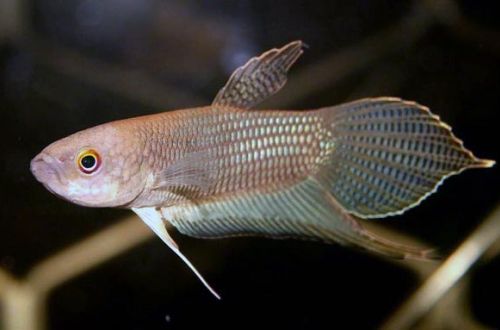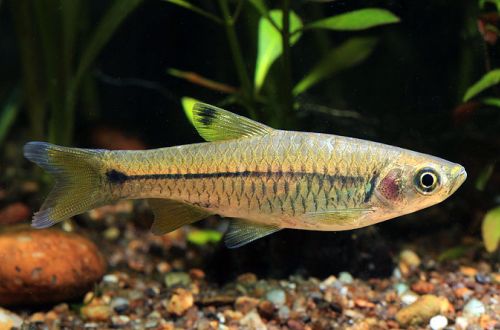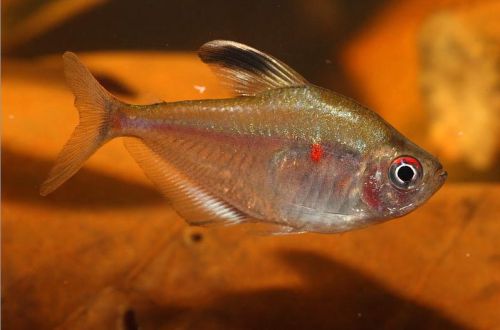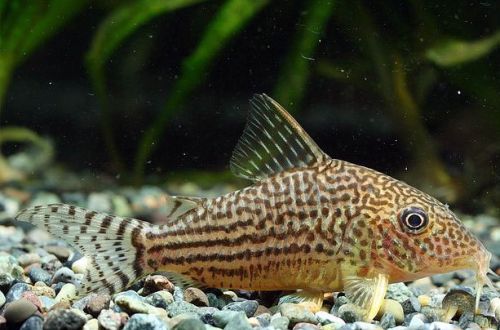
Iban cockerel
Betta Ibana or Cockerel Ibana, scientific name Betta ibanorum, belongs to the Osphronemidae family. Named after the native inhabitants of the northwestern part of Borneo – Ibans. Unpretentious and easy to maintain, successful cases of breeding are possible. Compatible with other fish of similar temperament.

Contents
Habitat
It comes from Southeast Asia from the island of Borneo from the territory of the Malaysian state of Sarawak on the island of Borneo. Despite the rather small natural distribution area, the fish inhabits a variety of biotopes, from peat bogs with dark water to flowing clean streams, and one of the populations was found in the backwater at the top of the waterfall. The milestones of the listed biotopes have common features: poor illumination due to overhanging tree crowns, an abundance of coastal vegetation and low values of hydrochemical parameters.
Brief information:
- The volume of the aquarium – from 80 liters.
- Temperature – 24-28°C
- Value pH — 4.0–6.8
- Water hardness – 1–5 dGH
- Substrate type – any
- Lighting – subdued
- Brackish water – no
- Water movement – little or no
- The size of the fish is 7–8 cm.
- Food – any food
- Temperament – peaceful
- Content – singles, pairs or in a group
Description
Adults reach a length of 7–8 cm. Males are somewhat larger than females and have more elongated fin tips. The color of the body is beige with a turquoise tint of scales and fins. Outwardly, it is very similar to other related species, for example, to Betta Kühne. A key distinguishing feature by which this species can be accurately identified is the orange pigment in the shell of the eyes.
Food
An omnivorous species, it will accept most popular feeds and products in dry, frozen or live form. The recommended diet may consist of a combination of flakes, pellets with bloodworms, brine shrimp, daphnia, etc. Do not overfeed, Bettas are prone to obesity. It is worth serving the amount of food eaten in 3-5 minutes.
Maintenance and care, arrangement of the aquarium
The optimal size of an aquarium for two fish starts from 70–80 liters. The choice of design does not matter much if the presence of shelters is provided. As shelters, snags, thickets of plants, decorative objects (wrecks, castles, etc.), as well as ordinary ceramic pots, pieces of PVC pipes, and so on can act. It is advisable to set the lighting level to a subdued level, or use floating plants and let them grow.
An additional decorative element will be the dried leaves of some trees, placed on the bottom. So that they do not float, they are pre-soaked. The leaves not only give the design more naturalness, but also affect the composition of the water, making it similar to the one in which fish live in nature. This is due to the release of tannins during decomposition. Read more in the article “Which tree leaves can be used in an aquarium.”
Successful long-term management of the Iban is dependent on maintaining stable water conditions within an acceptable temperature and hydrochemical range. The desired stability is achieved due to the uninterrupted operation of the installed equipment, primarily the filtration system, and the regularity of a number of mandatory aquarium maintenance procedures. The fish needs soft, slightly acidic water, so water treatment becomes important when replacing part of the water with fresh weekly.
Behavior and Compatibility
Although this species belongs to the group of fighting fish, it has a completely peaceful disposition. Intraspecific relationships are built on rivalry between males for the attention of females, especially during the mating season, but it does not come to clashes leading to injuries. Compatible with other non-aggressive peaceful fish of comparable size. Overly active neighbors can intimidate the timid Betta Ibana and push her to the periphery of the aquarium.
Breeding / breeding
In favorable conditions, spawning is quite possible. With the onset of the breeding season, the dominant male and female begin mutual courtship. This is followed by a kind of “dance of hugs” during which spawning occurs. The male collects fertilized eggs in his mouth, where they will be for the entire incubation period of 2-3 weeks, after which fully formed fry appear. While the male broods in a teak corner of the tank, the female swims nearby to protect herself from potential threats.
Fish diseases
The cause of most diseases is unsuitable conditions of detention. A stable habitat will be the key to successful keeping. In the event of symptoms of the disease, first of all, the quality of the water should be checked and, if deviations are found, measures should be taken to correct the situation. If symptoms persist or even worsen, medical treatment will be required. Read more about symptoms and treatments in the Aquarium Fish Diseases section.





